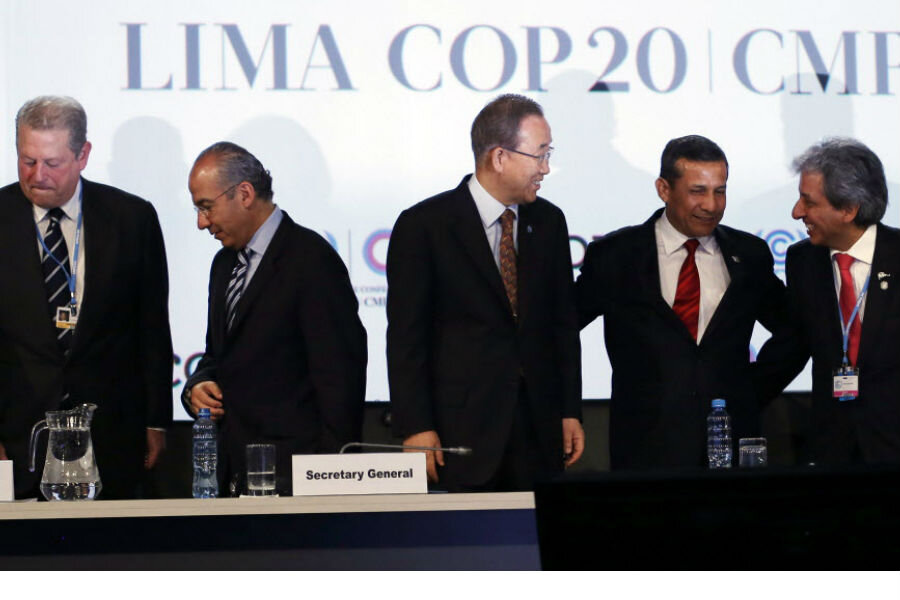What do Lima climate talks have in common with 'Stone Soup'?
Loading...
Folklore may be an odd place to look for an analog to two weeks of global climate talks in Lima, Peru, which ended over the weekend. But the tale of "Stone Soup" may be as good a place to start as any.
The key to heading off hunger in the tale's fictional village was to gain the mental consent of the impoverished villagers to contribute something to the pot, however meager the contribution might have seemed at the time. Presumably, this would pave the way for additional, more-ambitious meals once the hoarding stopped.
The meeting in Lima, the United Nations' 20th Conference of the Parties to the 1992 Framework Convention on Climate Change, ended on a similar note of consent. Given how elusive efforts to negotiate a truly global agreement to combat human-triggered global warming have been, conference attendees resolved to draft a new climate pact to take effect in 2020 would be "applicable to all Parties."
Unlike the 1997 Kyoto Protocol, in which a binding treaty required industrial countries party to the pact to reduce their carbon-dioxide emissions by a collective average of 5.5 percent between 2008 and 2012, the new agreement's budding form is more bottom up than top down.
It bids countries to contribute what they can, or in UN parlance, an agreement should respect "the principle of common but differentiated responsibilities and respective capabilities, in light of different national circumstances."
Instead of serving up an all-encompassing formal treaty that requires ratification of a certain mix of countries to take effect under international law, an agreement's legal force on emissions could stem from domestic laws countries pass to implement the emission-control efforts they pledge.
The challenge between now and next December's meeting in Paris, when negotiators expect to consider a draft of the new pact, is to ensure that in crafting the details no one overturns the soup vat.
Deep divisions between rich and poor countries remain over aid for adopting more climate-friendly energy technologies in developing countries, for instance. Developing countries want to see more emphasis placed on aid to help them adapt to the effects of global warming. And countries are haggling over the national emissions commitments they have been "invited" to submit during the first quarter of next year. At issue is how deeply they will allow others to delve into the details to gauge the adequacy of a country's contribution as well as the combined effect of all contributions on greenhouse-gas emissions.
The point is seen by many as important to an agreement that is likely to end up relying on international peer pressure to keep emission controls on a track that climate scientists say stands the highest likelihood of holding increases in global average temperatures to about 2 degrees Celsius (3.6 degrees Fahrenheit) above pre-industrial levels by 2100.
Even so, if governments fail to agree on how transparent their efforts should be, non-government organizations undoubtedly will be keeping close track, noted Harvard University environmental economist Robert Stavins in a blog post written from Lima.
The outcome this past weekend has left some environmental groups pronouncing the Lima talks a failure, he noted, since whatever comes out of Paris will fail to put emissions on a short-term path that scientists have identified as needed for a 2-degree path.
But each agreement is one in a long line of steps needed to achieve the 2-degree goal, he added, noting that the number of nations involved is significant. Lima pours a more-solid foundation for the requisite long-term action, he suggested.
"We have the draft 'elements' text, as an annex to the Lima decision," adds Rachel Cleetus, a senior economist with the Union of Concerned Scientists in Washington, in an e-mail. "It’s a good start but there will need to be some hard work and a willingness to move from long-entrenched positions to get to strong outcome in Paris."






